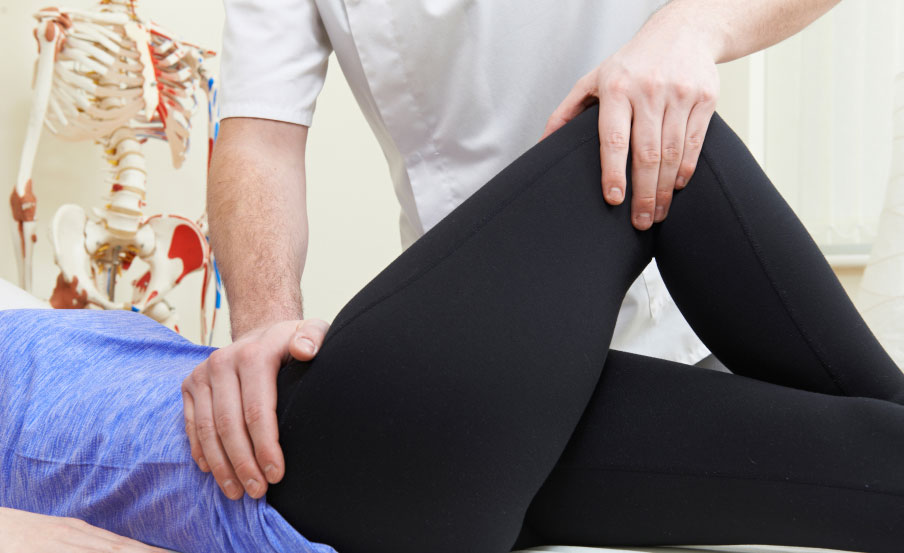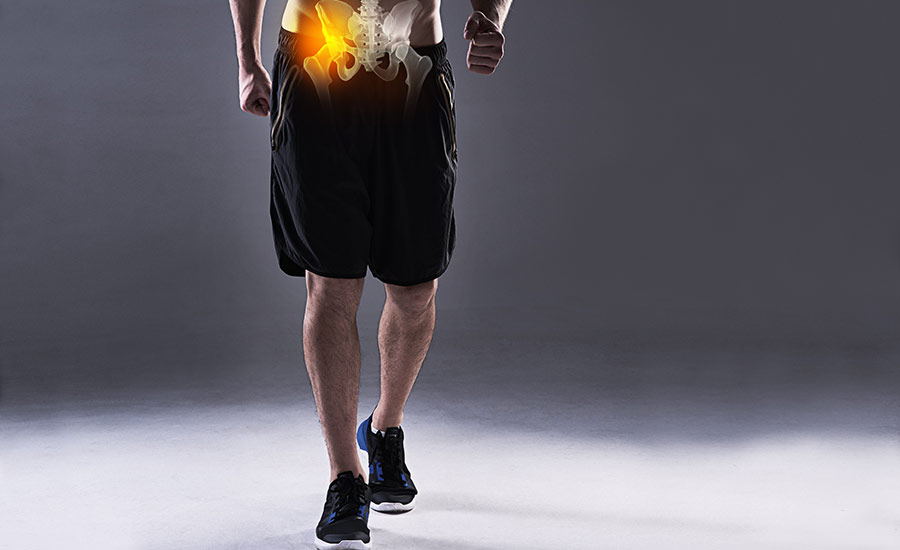
What Is Hip Arthroscopy?

Meet Our Hip Arthroscopy Specialists
Find a Specialist Near You
Get the care you deserve close to home at one of our New Jersey or New York Locations.
About Hip Arthroscopy

Who Might Need Hip Arthroscopy Surgery?
Hip arthroscopy surgery is typically recommended for patients who have not responded to conservative treatments for their hip pain or injuries such as resting, physical therapy or medication.
61% of hip arthroscopy surgeries are performed on patients between the ages of 30 and 60.
At OrthoEast, the conditions we can diagnose and treat using hip arthroscopy are:
- Labral tears
- Synovitis
- Loose bodies
- Hip dysplasia
- Hip joint infection
- Hip joint arthritis
- Femoroacetabular impingement
We recognize that the idea of undergoing hip arthroscopy can be intimidating. That’s why our team is dedicated to offering a customized approach to your treatment.
Our board-certified physicians provide comprehensive care and strive to establish strong connections with patients. This enables us to guide you through your procedure with enhanced comfort and confidence.
Our hip specialists include Dr. Casey Pierce, Dr. Thomas A. Novack, Dr. Anthony Festa and Dr. William Matarase.
Like any surgical procedure, you should opt for hip arthroscopy surgery after careful consultation with our orthopedic specialists.
Conditions That Require Hip Arthroscopy Surgery
Not all hip conditions require surgery, as some might only require physical therapy or medication, but conditions that could require hip arthroscopy surgery are:
A hip fracture occurs when the femur or thighbone breaks near the hip joint. Hip fractures can be caused by a variety of factors, including falls, osteoporosis, and trauma.
When a fracture occurs in the hip bone, a hip arthroscopy can be utilized to assess the damage and formulate an effective treatment plan.
Hip arthritis occurs when the cartilage in the hip joint wears down, causing pain, stiffness, and decreased mobility.
In some cases of hip arthritis, arthroscopy may be used to address specific issues, such as bone spurs or loose cartilage that are contributing to pain and inflammation.
In cases of severe hip arthritis, total hip replacement surgery may be recommended as the most effective treatment option.
Hip arthroscopy surgery can be used to repair a torn labrum — is a piece of cartilage that lines the rim of the hip joint socket. Labral tears can occur due to injury, repetitive motion, or degenerative changes.
In the case of a tear, an arthroscopy allows doctors to assess the damage and repair it in a minimally invasive manner.
Studies show that 88% of patients notice an improvement in hip pain after labral repair surgery.
Femoracetabular impingement usually develops when growth of extra bone causes the hip joint to rub against itself. It is frequently diagnosed and treated via hip arthroscopy.
During the hip arthroscopy, we use specialized instruments to reshape the bone and remove damaged tissue, which can alleviate the impingement and restore normal hip joint function.
Studies have shown that hip arthroscopy leads to notable improvements in pain and stiffness when performed to treat femoroacetabular impingement.
How Is Hip Arthroscopy Surgery Performed?
Depending on the type of surgery, hip arthroscopies are usually performed under general anesthesia.
During the procedure, we start by making a small incision in the skin around the hip joint and insert an arthroscope, which is a thin, flexible tube with a camera and light attached to the end. The camera allows us to view the inside of the hip joint on a video monitor.
Next, we use specialized instruments to perform necessary repairs or procedures, such as removing loose fragments of bone or cartilage, repairing or trimming damaged cartilage or labral tissue, or addressing impingements that may be causing pain or limited range of motion.
Once the procedure is complete, the arthroscope is removed and the incisions are closed with sutures or surgical staples.
Types of Hip Arthroscopy Surgery at OrthoEast
The type of hip arthroscopy surgery you might need depends on your medical history and current condition.
Some of the surgeries that our hip arthroscopy specialists at OrthoEast perform include:
In this type of hip arthroscopy surgery, we repair a broken bone in the hip joint. This can be done using minimally invasive techniques to realign the bone and stabilize it with pins, screws, or other hardware.
During this procedure, we make small incisions in the hip area and use specialized tools to realign the broken bones and stabilize the fracture.
The procedure is typically performed under general anesthesia and may require a short hospital stay.
Hip resurfacing is a surgical procedure in which the damaged surfaces of the hip joint are removed and replaced with metal implants.
The damaged surfaces include the femoral head (the ball-shaped part of the thigh bone) and the acetabulum (the socket in the pelvis). Unlike a total hip replacement, which involves replacing the entire hip joint with an artificial joint, hip resurfacing preserves more of the natural bone.
Hip resurfacing is typically recommended for younger patients who have strong, healthy bones and who want to maintain an active lifestyle.
Labral repair is a surgical procedure performed using hip arthroscopy to fix a tear or damage to the labrum.
A labral tear can result from an injury, repetitive motions, or degenerative changes, and can cause pain, clicking, or locking in the hip joint.
During a labral repair, we use arthroscopic tools to remove loose or damaged tissue, then reattach the remaining labrum to the rim of the socket using sutures or anchors.
This procedure is used to relieve pressure on the hip joint, typically in cases where the joint is impinged or compressed.
It involves removing or shaving away bone and tissue to create more space within the joint, allowing for better movement and reduced pain.
This procedure is commonly used to treat conditions such as femoroacetabular impingement, labral tears, and hip dysplasia.
How To Prepare for Hip Arthroscopy Surgery
Before you undergo hip arthroscopy surgery, our team at OrthoEast will provide you with detailed instructions on how to prepare for your procedure. If you smoke, you’ll need to stop smoking before the surgery, as it can delay your healing.
Generally, you should avoid eating or drinking anything after midnight the night before your surgery.
You should also arrange for someone to drive you home after the surgery, as you will not be able to drive yourself.
We’ll cover all you need to know and answer all of your questions regarding pre-op, surgery and recovery, so you feel as prepared and comfortable as possible with your procedure.
How Long Does Hip Arthroscopy Surgery Take?
Hip arthroscopy surgery usually takes 1-2 hours. However, the length of the surgery depends on the individual’s specific condition and the type of surgery being performed.
In some cases, the surgery may take longer if additional procedures are required, such as repairing damaged tissue or bone, or removing bone spurs.
Most patients can go home the same day as the surgery, although some may need to stay overnight in the hospital.
What To Expect After Hip Arthroscopy Surgery
After the surgery, you will be taken to a recovery room where you will be monitored until you are awake and stable.
You may experience some pain, swelling, and stiffness in the hip area for the first few days after surgery.
Following the procedure, you may be instructed to restrict lifting or bending, and to walk with crutches for a short period of time.
Items that can aid in your recovery after hip arthroscopy surgery include:
- Leg lifter
- Elevated toilet seat
- Shower chair
- Backpack to hold items while on crutches
Our board-certified physicians will provide you with specific instructions on how to care for yourself after the surgery, including what you’ll need during recovery and when you’ll be able to return to normal activities.
How Long Does Hip Arthroscopy Recovery Take?
Recovery time from hip arthroscopy surgery can vary depending on the individual patient and the specific type of surgery performed.
However, in general, you can expect to spend several weeks to several months recovering before returning to normal activities. In the first few days after surgery, you will typically need to rest and avoid putting weight on the hip of the affected leg.
Pain and swelling are common during this time, and you may need to take pain medications, if prescribed, or use hot and cold compresses.
After the initial recovery period, you may begin physical therapy to help regain strength and mobility in your hip. This may involve exercises to improve range of motion, build strength in the hip muscles, and improve balance and stability.
Schedule A Consultation For Hip Arthroscopy Procedures At OrthoEast
We know that the thought of a surgical procedure can be scary, and sifting through all this information at once can be overwhelming. That’s why our caring team at OrthoEast offers personalized care every step of the way, answering your questions and putting your mind at ease.
Find us at one of our locations in New Jersey or New York to schedule a consultation:
- Wayne, NJ
- Morristown, NJ
- Clifton, NJ
- Linden, NJ
- Wall Township, NJ
- New York, NY











